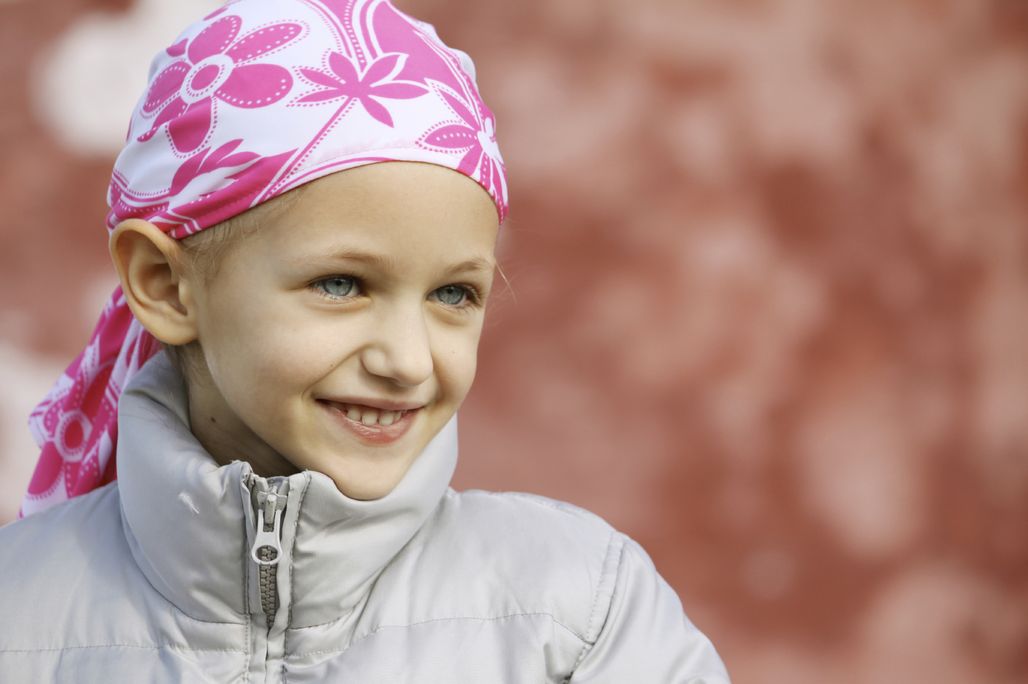September has been selected as the month to raise awareness of various types of cancer, including malignant tumors that occur in childhood; as well as gynecological origin, thyroid and prostate cancer, leukemia (s) and lymphoma (s). Each year in the United States there are more than 1.5 million newly diagnosed Americans with any form and stage of cancer. Of these, almost 16,000 are children between the ages of 0-19 years with a mean age of 6 years at the time of diagnosis. It affects all ethnic, gender, and socioeconomic groups. Brain tumors and leukemias account for 38% of all cancers. 121 of those diagnosed do not survive and more than 40,000 children undergo cancer treatment each year. Of those treated, 60% will suffer late effects such as infertility, secondary cancers, and heart failure. Cancer is a disease that affects the person who suffers it and also the entire family group, especially when it is diagnosed in children. Many years of studies and research, as well as foundations, local and international groups have achieved goals towards the improvement of treatment alternatives directed to more specific sites as well as the quality of life of children and their families has been improved. The 5-year overall survival rate is approximately 85%.
According to the Surveillance, Epidemiology, and End Results (SEER) Program (seer.cancer.gov), acute lymphoblastic leukemia has a 5-year survival rate of 90% and Hodgkin's lymphoma reaches 97.2%, followed by Wills tumor at 93.1%. Other cancers localized to sites such as soft tissues, bone and joints, brain, and central nervous system, are in the 74% range. This is good news for all affected patients, their loved ones, and also all those involved in some form of disease management at any stage and presentation.
CureSearch is a national non-profit organization focused on accelerating the search for cures for childhood cancer and is one of the examples of existing entities exclusively dedicated to improving the lives of each of the 43 children diagnosed each day with some type of cancer in the US, and works closely with more than 60 pediatric hospitals nationwide. Along with CureSearch, there are a number of private and semi-private non-profit groups dedicated to contributing to all aspects of prevention, early detection and treatment, as well as support groups for patients and their families to alleviate the cancer pain.
The American Cancer Society (ACS) offers a comprehensive set of care options, which includes basic aspects of the disease, such as signs and symptoms according to the site where it occurs, its prevalence, (number of people suffering from cancer), as well as surveillance programs and the economic impact of this condition. In the same way, the ACS is a very complete source of information, including videos with topics such as radiotherapy, chemotherapy, radiation and the interactive tool. It also includes current clinical research trials and the tool to empower the patient by understanding these clinical trials.
Hospitals and universities are also actively involved and working together to find cures and innovative methods of treatment and support. We can cite some of these organizations:
St. Jude Children's Research Hospital is located in Memphis, Tennessee and officially opened in February 1962. Today, it offers treatment programs for brain tumors, immunodeficiency diseases leukemia / lymphoma, sickle cell disease, blood disorders, solid tumors, and infectious diseases . It also offers teams of exceptionally trained and prepared professionals who are inclined towards outstanding technologies in different areas of health and medicine. Surgically, he specializes in complex and rare cancer surgeries, including:
• Surgery to save a limb in limb sarcomas.
• Surgeries for the preservation of vision and / or the eye in cases of retinoblastoma.
• Surgeries to eradicate solid tumors that protect vital healthy tissues, such as blood vessels, kidneys, and extremities.
• Advanced and highly complex neurosurgery for the excision of brain tumors.
Bone marrow transplantation, cancer predisposition diagnosis, radiation oncology, rehabilitation services, school programs, and clinical nutrition are just some of the services available at this center.
Dana-Farber Cancer Institute is an institution affiliated with the Harvard University School of Medicine, which also offers a variety of services aimed at treating and curing cancer in children. The Jimmy Foundation, a non-profit organization affiliated with this institute, adds a service of enormous value to those affected by cancer, especially children. Founded in 1947 by Dr. Richard Farber, the institution has grown to become one of the leading centers for cancer research and treatment in the US and abroad. It currently employs about 4,000 people who support more than 400,000 patient visits per year and is involved in some 700 clinical trials. The Dana-Farber Cancer Institute is internationally recognized for its involvement in research and the clinical excellence it offers to patients and their families.
To the extent that it provides advanced training to international faculty in cancer research and treatment, the Institute conducts community-based cancer prevention, detection, and control programs in the State of New England. , and maintains joint programs with other institutions affiliated with Harvard University School of Medicine, including Brigham Hospital for Women, Boston Children's Hospital, and Massachusetts General Hospital. Dana-Farber is supported by the National Cancer Institute, the National Institute of Allergy and Infectious Diseases, and the generous support of numerous foundations and individuals who contribute to individual research programs as well as the institute's clinic programs o to Jimmy's Fund, the institute's main charity, named after one of his little patients. Dana-Farber is also a federally designated Center for AIDS Research, and a founding member of the Dana-Farber / Harvard Cancer Center, a federally designated comprehensive cancer center.
For pediatric patients Dana Farber offers, among others, specialized programs for cancers arising from the nervous system such as astrocytoma, glioblastoma and meningioma, among others. All types of leukemia and lymphoma, as well as bone, lymph node and other cancers are within the scope of the center's expertise.
The Leukemia and Lymphoma Society (LLS) is the largest voluntary health organization dedicated to funding research, finding cures, and ensuring access to treatment for blood cancer patients. Since 1949 LLS has been at the forefront of blood cancer advancements such as chemotherapy and stem cell transplantation at the forefront of specific chemotherapies and immunotherapies that are saving thousands of lives today. LLS is changing the cancer landscape with over 300 active research projects exploring different promising new avenues of research; projects that promise and that will save lives not some day, but today. Whenever we talk about cancer, we use the same expression: Someday. Someday there will be a cure. Someday we won't lose the people we love. But when is someday? With partnerships and collaborations between LLS research biotech and pharmaceutical companies, patient support services and people working for blood cancer patients everywhere, someday is today.
The Leukemia & Lymphoma Society's (LLS) mission is to: cure leukemia, lymphoma, Hodgkin's disease, and myeloma, and improve the quality of life for patients and their families. LLS exists to find cures and ensure access to treatments for blood cancer patients. LLS is the voice of all blood cancer patients and works to ensure access to treatment for all blood cancer patients. LLS recognizes that seeking cures is not enough. We have to ensure that patients have access to the treatments, services and providers they need to live longer and better; a healthier life. LLS is dedicated to removing barriers to care. By providing our network of advocates with a powerful voice, the policy and advocacy team drives policies and procedures that accelerate the development and approval of innovative treatments and ensure that patients have sustainable access to quality, coordinated care. Our team is committed to ensuring that patients have the right network of services and providers available to them and are protected from the high costs that limit access to life-saving treatments. LLS is the leading source of free and highly specialized blood cancer information, education and support for patients, their survivors, families, and healthcare professionals. We touch patients in their communities through our programs in the US and Canada. We stand for blood cancer survivors and their families, to help patients learn about their cancer treatments and ensure they have access to quality, affordable, and coordinated care. Bottom of
Cancer Research in Children es una iniciativa sin fines de lucro nacional que apoya los esfuerzos pioneros de la Universidad de Minnesota en la investigación relacionada con la prevención, el diagnóstico, el tratamiento y la cura del cáncer infantil. En 1979 Katie Hageboeck, una niña de 13 años de edad en Wayzata, MN, se acercaba al final de sus 16 meses de batalla contra la leucemia. Sabiendo que estaba perdiendo la batalla, ella pidió que el dinero que había estado ahorrando para comprar una bicicleta de 10 velocidades fuera donado a un fondo poco conocido por la Universidad de Minnesota llamado Fondo de Investigación del Cáncer de los niños. Su sueño era que se lograra una cura de manera que los niños que vinieran detrás de ella sobrevivieran la enfermedad. Un poco más de un año después de la muerte de Katie, sus padres y los amigos de la familia organizaron lo que pensaban que era una recaudación única de fondos en beneficio para este fondo y así honrar el último deseo de Katie. Treinta y dos años más tarde, el beneficio de este “Amanecer de un Sueño” continúa trayendo esperanza y el año pasado recaudó más de 1,5 millones de Dólares. El Fondo de Investigación del Cáncer de los niños ha pasado de ser una pequeña recaudación de fondos de base en una organización no lucrativa nacional, con cientos de miles de donantes individuales, junto a empresas y fundaciones, que han dado casi 100 millones de Dólares para hematología /oncología pediátrica así como a médicos e investigadores en los programas de transplante de médula ósea y de células de la sangre de la Universidad de Minnesota. Muchos descubrimientos financiados por el Fondo de Investigación del Cáncer de los niños han revolucionado la forma como se trata el cáncer infantil en todo el mundo y ha contribuido a apoyar los programas de calidad de vida para los pacientes pediátricos con cáncer y sus familias. Invertimos en las áreas de investigación que tendrán el mayor impacto en la búsqueda de mejores tratamientos y curas para niños con cáncer. Éstas son sólo algunas de las maneras que estamos haciendo progresos:
• The Childhood Cancer Registry network led by one of our co-chief medical advisers is being used for 97 percent of new pediatric cancer patients, and is the model for medical registries.
• Researchers supported by this fund have been recipients of more contributions from the National Institutes of Health (NIH) and other grants for cord blood stem cell collection, preservation, and transplantation programs than any other institution. in the world.
• The double cord blood transplant - developed by our other medical advisor, which has dramatically increased survival rates from leukemia - in both children and adults - is known worldwide as the Minneapolis regimen. The University of Minnesota - the center we support - has performed more cord blood transplants than anywhere else in the world.
• The fund has funded the largest study of childhood cancer survivors, now numbering more than 300,000 in the US, which found that survivors were at significant risk for ongoing health problems due to their cancer treatment. Cancer. We also support one of the first clinics dedicated to the ongoing health care of childhood cancer survivors.
• In just over 10 months, researchers funded by the Children's Cancer Research Fund develop and manufacture a brain tumor vaccine that is being prepared for clinical trials. This vaccine shows promise in increasing survival rates and providing treatments with fewer side effects.
• Our researchers are isolating T cells from umbilical cord blood and then inserting a specific sequence of DNA into the T cells, improving their ability to recognize and kill leukemia and lymphoma cells.
• With the continued support of the Children's Cancer Research Fund, new discoveries can continue to contribute to the progress that has been made, and we can continue to work toward one end goal - a world free of childhood cancer.
These are just a small sample of institutions and non-profit organizations with a mission to help millions of people affected directly or indirectly by cancer.
Sources:
Children's Cancer Center Research: www.childrenscancer.org
The Leukemia and Lymphoma Society: www.lls.org
American Cancer Society: www.cancer.org
The Dana-Farber Cancer Institute: www.dana-farber.org














